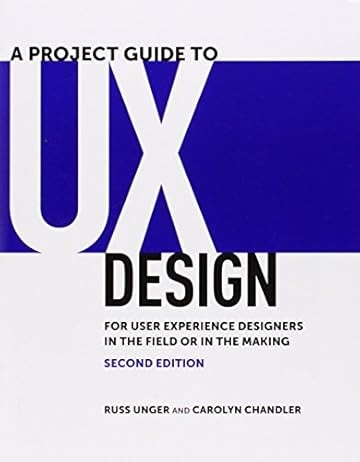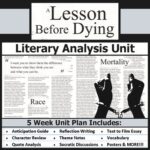Russ Unger’s and Carolyn Chandler’s “A Project Guide to UX Design” (second edition) aims to be a comprehensive introduction to the field of User Experience (UX) design. This review delves into the book’s strengths and weaknesses, particularly for both newcomers and seasoned professionals, considering its relevance in the ever-evolving landscape of UX.
The book promises a tour through core UX areas: project management, business needs, user research, personas, content strategy, and wireframing. While the table of contents is encouraging, the depth of exploration within each chapter is debatable.
 A Project Guide to UX Design book cover
A Project Guide to UX Design book cover
“A Project Guide to UX Design” operates as a primer, touching upon numerous subjects rather than diving deep into any single one. It provides an overview, similar to introductory textbooks. While this approach has its benefits, the lack of in-depth analysis leaves the reader wanting more. True understanding requires supplementary exploration.
For someone experienced in the field, the book might not offer significantly new information. After several years of UX experience, some readers find themselves already familiar with much of the material presented.
For newcomers, the surface-level approach might not provide enough practical knowledge. While it introduces concepts, the book often lacks the depth needed for a complete beginner to grasp and apply them effectively without further reading.
Take, for instance, the chapter on personas. Personas are a key UX technique, but also a debated one. The chapter focuses on creating an ideal persona template, but only briefly mentions the differing opinions on their value. It misses an opportunity to explore the advantages and disadvantages, best practices, and potential pitfalls in detail.
Later chapters, such as the one on usability testing, offer more specific insights. However, even here, alternatives like Steve Krug’s “Rocket Surgery Made Easy” provide a more engaging and actionable introduction to usability testing.
A significant limitation is the book’s age. In a fast-moving field like UX, practices change rapidly. Best practices from a few years ago can become outdated.
The book lacks coverage of crucial modern topics. Mobile UX is barely mentioned, and responsive design is noted only as a “novel new technique.” This omission is critical given the dominance of mobile devices in today’s digital landscape.
The ambitious scope of covering UX in a single volume is a double-edged sword. Each chapter could easily be expanded into its own book. While this creates a concise overview, it sacrifices depth and nuance.
Despite its limitations, “A Project Guide to UX Design” remains valuable. Its strength lies in consolidating essential UX techniques into a single resource. It can be useful for demonstrating the breadth and value of UX design within a project.
It’s important to remember that this book is a starting point. Continuous learning and exploration are essential to truly mastering UX. This book can serve as a foundation, but be ready to dive deeper with more specialized resources.
